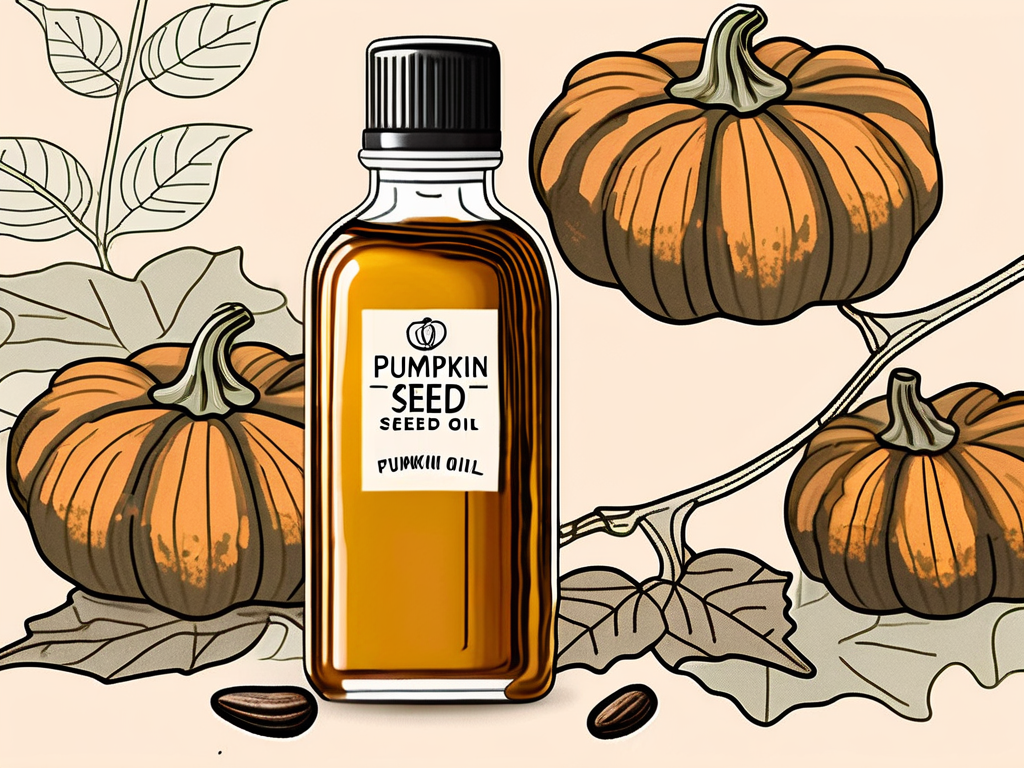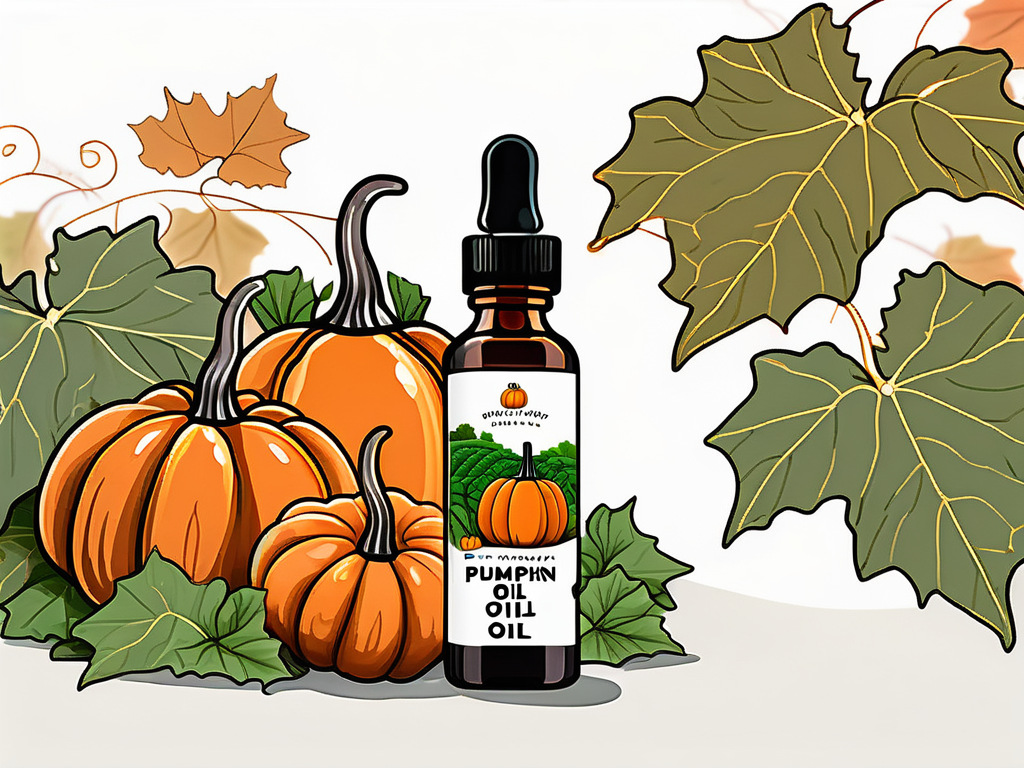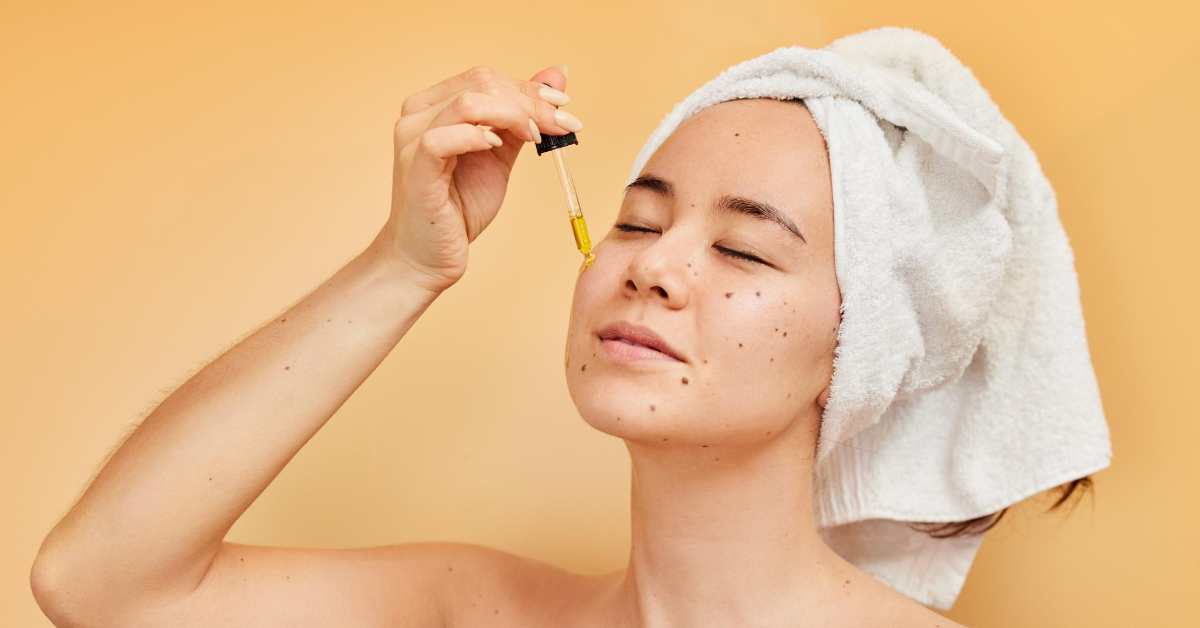In recent years, pumpkin seed oil has gained popularity in the skincare world for its numerous benefits. This rich, golden oil is extracted from pumpkin seeds through a process known as cold-pressing. It contains a high concentration of vitamins, minerals, and antioxidants that can help improve the health and appearance of your skin. If you’re looking to incorporate pumpkin seed oil into your skincare routine, read on to discover its benefits, how to choose the right oil, and how to incorporate it into your daily regimen.
Understanding the Benefits of Pumpkin Seed Oil
Pumpkin seed oil is packed with nutrients that can nourish and protect your skin. Let’s take a closer look at the nutritional profile of this oil and its skin-enhancing properties.

Derived from the seeds of the pumpkin, this oil has been used for centuries in traditional medicine for its various health benefits. In addition to its topical applications for skin health, pumpkin seed oil is also consumed internally for its potential to support prostate health in men and promote overall well-being.
Nutritional Profile of Pumpkin Seed Oil
Pumpkin seed oil is rich in essential fatty acids, including omega-3 and omega-6. These fatty acids help to strengthen the skin’s barrier function, keeping it supple and moisturized. Additionally, pumpkin seed oil contains vitamins A and E, which are powerful antioxidants that can help protect your skin from free radical damage.
Moreover, pumpkin seed oil is a good source of zinc, a mineral essential for collagen production and skin repair. Zinc also has anti-inflammatory properties, making it beneficial for soothing irritated skin conditions such as eczema and psoriasis. The combination of nutrients in pumpkin seed oil works synergistically to promote overall skin health and radiance. Learn more about the pumpkin seed oil from this website.
Skin-Enhancing Properties of Pumpkin Seed Oil
Beyond its nutrient content, pumpkin seed oil possesses unique properties that make it beneficial for your skin. It is known for its anti-inflammatory and antimicrobial properties, which can help calm redness and irritation while keeping acne-causing bacteria at bay. The oil is also rich in phytosterols, which promote collagen production and help diminish the appearance of fine lines and wrinkles.
Furthermore, the high levels of antioxidants present in pumpkin seed oil contribute to its anti-aging effects by protecting the skin from environmental stressors and UV damage. Regular use of this oil can help improve skin elasticity, firmness, and overall tone, resulting in a more youthful complexion. Incorporating pumpkin seed oil into your skincare routine can provide a natural and effective way to maintain healthy and vibrant skin.
Choosing the Right Pumpkin Seed Oil for Your Skin
When incorporating pumpkin seed oil into your skincare routine, it’s important to choose the right oil for your skin type. Here are some factors to consider when making your selection.

Factors to Consider When Buying Pumpkin Seed Oil
Look for organic and cold-pressed pumpkin seed oil to ensure its purity and effectiveness. Check the label for any added ingredients or fillers that may dilute its potency. Additionally, consider the packaging – opting for oil packaged in dark glass bottles can help prevent oxidation and maintain the oil’s freshness.
Organic pumpkin seed oil is extracted from pumpkin seeds that have been grown without the use of synthetic pesticides or fertilizers, making it a more environmentally friendly option. Cold-pressed extraction involves pressing the seeds at low temperatures, preserving the oil’s nutrients and beneficial properties.
When selecting pumpkin seed oil for your skin care needs, consider the oil’s color and aroma. High-quality pumpkin seed oil typically has a dark green color and a nutty aroma, indicating that it is rich in antioxidants and vitamins. These natural compounds can help nourish and protect your skin, promoting a healthy complexion.
Pumpkin Seed Oil for Different Skin Types
While pumpkin seed oil can benefit all skin types, it’s important to tailor your usage based on your specific skin concerns. Here’s how you can incorporate pumpkin seed oil into your skincare routine based on your skin type.
Pumpkin seed oil is not only a versatile ingredient but also a powerhouse of nutrients for the skin. Rich in antioxidants, vitamins A and E, and essential fatty acids, this oil can help address various skin issues and promote overall skin health.
Pumpkin Seed Oil for Dry Skin
For those with dry skin, pumpkin seed oil can provide much-needed hydration and nourishment. The high levels of omega-3 and omega-6 fatty acids in the oil help to strengthen the skin’s natural barrier, preventing moisture loss. Apply a few drops of the oil to your face after cleansing and toning, focusing on any dry areas. Gently massage it into your skin using upward circular motions. Follow up with your regular moisturizer to seal in the oil and lock in moisture.
In addition to its hydrating properties, pumpkin seed oil also contains zinc, which can help soothe and calm irritated skin. Regular use of this oil can improve skin elasticity and promote a more youthful complexion.
Pumpkin Seed Oil for Oily Skin
Contrary to what you may think, pumpkin seed oil can also benefit oily skin types. Its lightweight texture makes it easily absorbed by the skin without leaving a greasy residue. The oil’s high linoleic acid content can help regulate sebum production, making it a suitable choice for those with oily or acne-prone skin. To incorporate it into your skincare routine, mix a few drops of pumpkin seed oil with your moisturizer or apply it as a spot treatment on areas prone to excess oil production.
Furthermore, the anti-inflammatory properties of pumpkin seed oil can help reduce redness and inflammation associated with acne breakouts. Regular use of this oil can balance the skin’s natural oil production and improve overall skin texture.
Precautions and Possible Side Effects of Pumpkin Seed Oil
While pumpkin seed oil is generally safe for most people, it’s essential to be aware of potential allergic reactions and interactions with other skincare products.
Allergic Reactions to Pumpkin Seed Oil
If you have a known allergy to pumpkin or other seeds, it’s wise to do a patch test before integrating pumpkin seed oil into your skincare routine. Apply a small amount of the oil to a discreet area of your skin, such as the inner forearm, and wait 24 hours to check for any adverse reactions.
Interactions with Other Skincare Products
Consider your current skincare routine and the products you’re using before incorporating pumpkin seed oil. It’s always best to consult with a dermatologist or skincare professional if you’re unsure about potential interactions with other products, especially if you have sensitive or reactive skin.
As with any new skincare product, consistency is key when incorporating pumpkin seed oil into your routine. It may take time to see noticeable results, so be patient and consistent with your usage. By understanding the benefits, choosing the right oil, and incorporating it into your daily skincare routine, you can leverage the power of pumpkin seed oil for healthier, more radiant skin.
